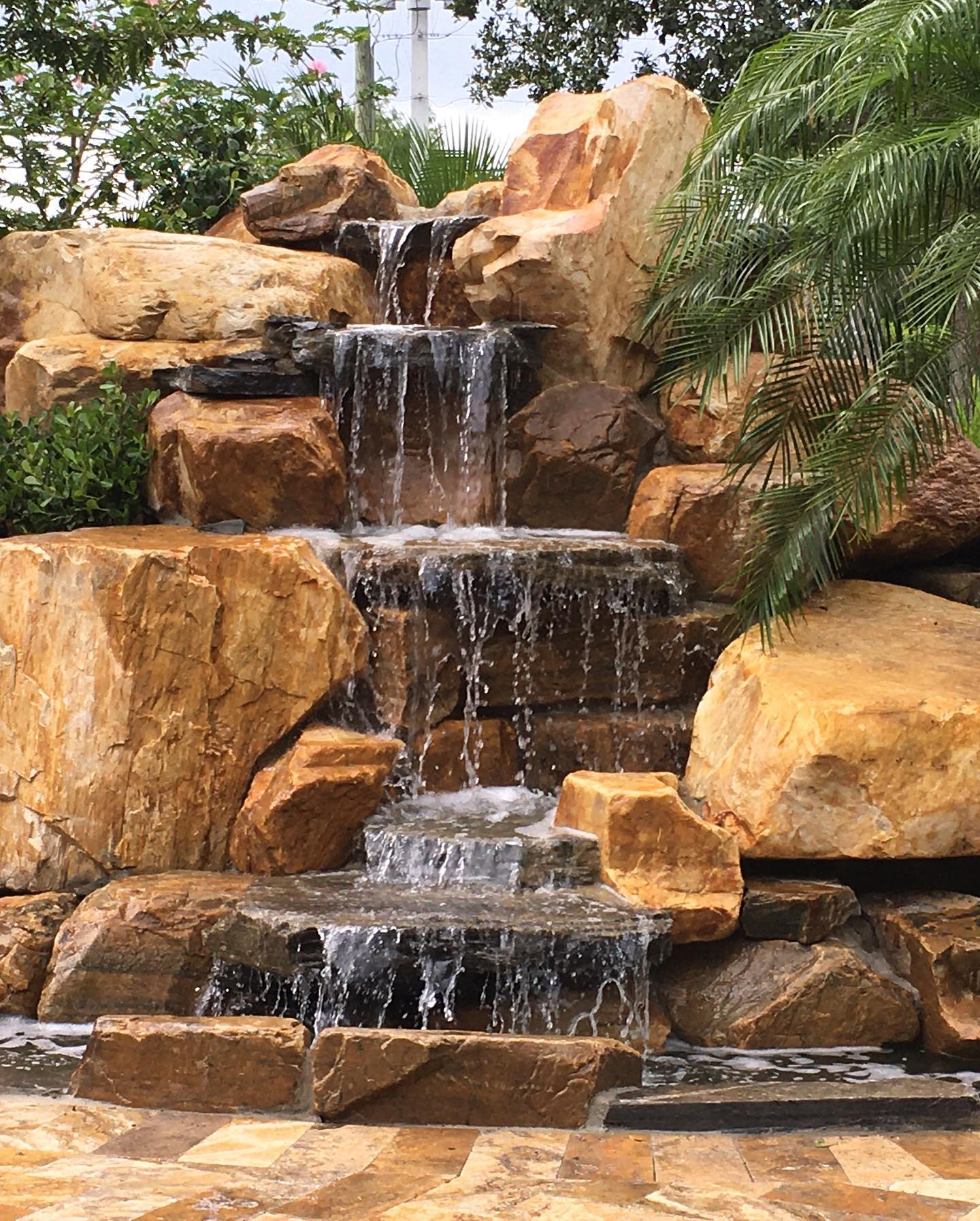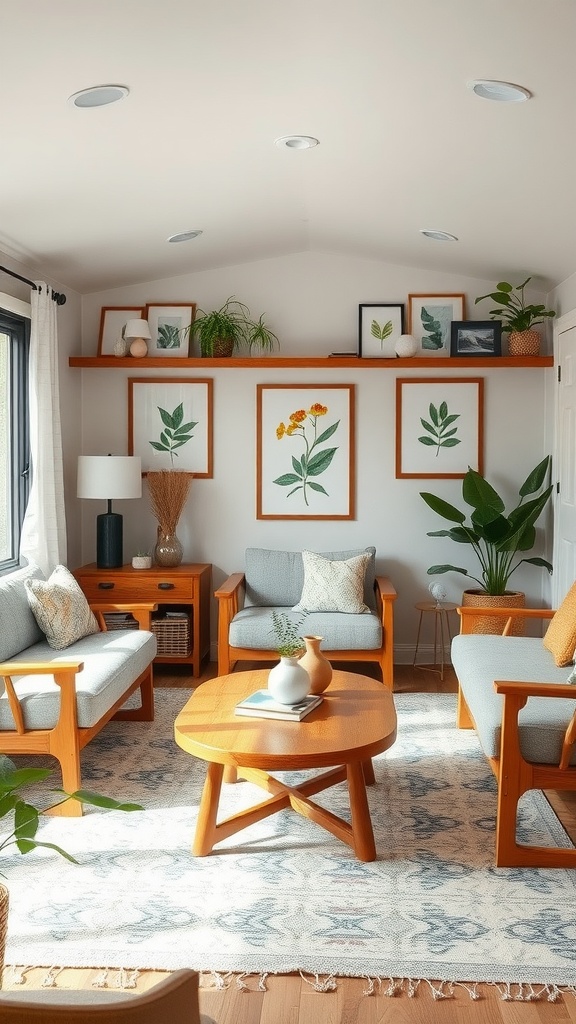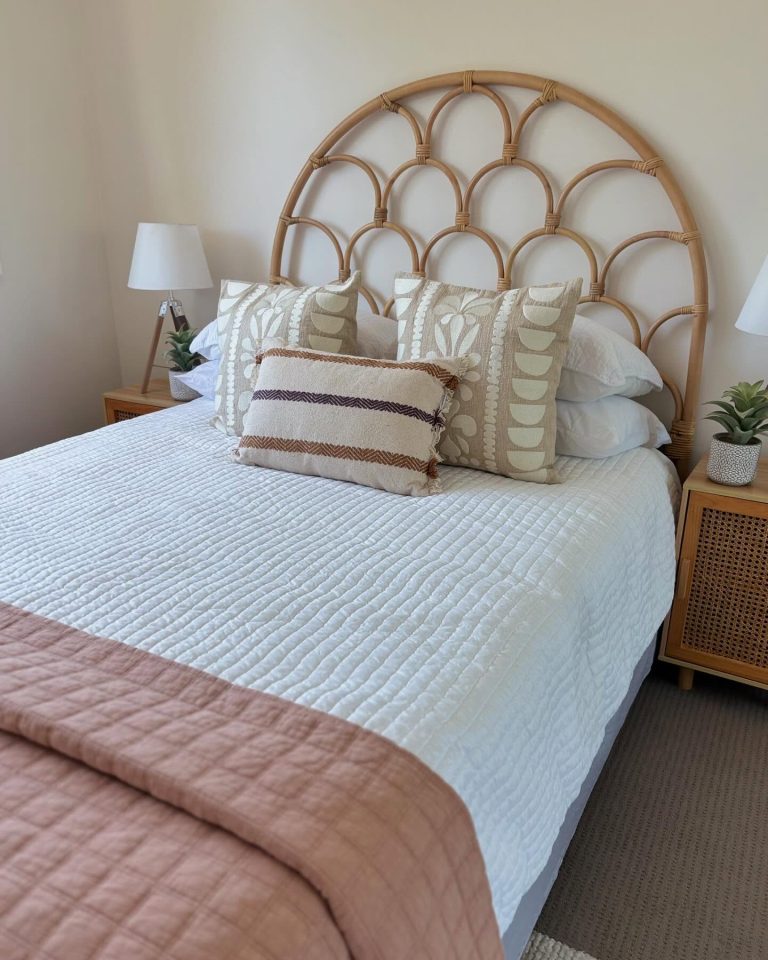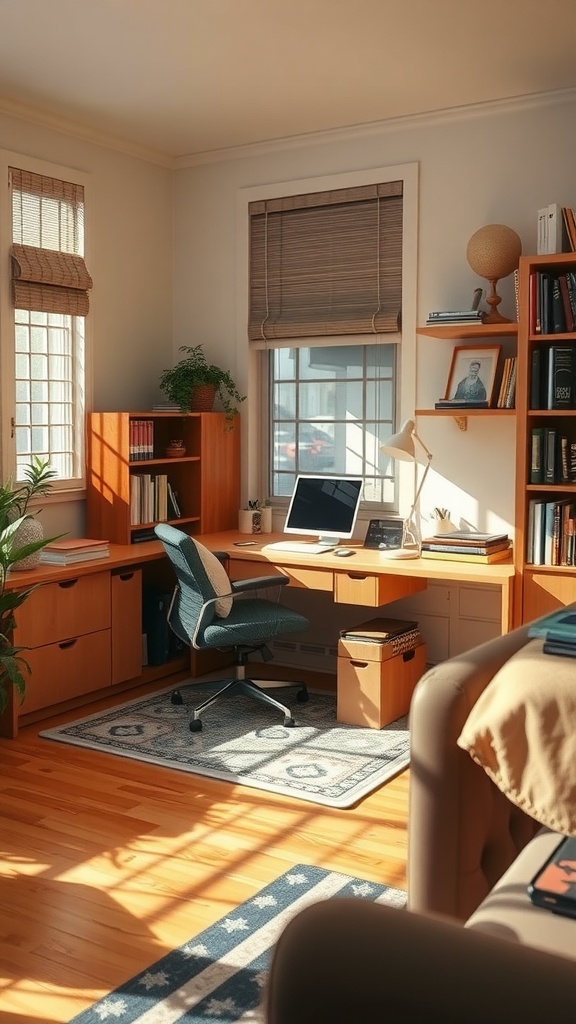15+ Rock Garden Landscaping Ideas to Inspire Your Outdoor Space
Transform your outdoor living area into a beautiful and serene space with these rock garden landscaping ideas. Whether you’re looking for something rustic and natural or sleek and modern, a rock garden can add texture, depth, and character to your yard. In this post, we will explore over 15 inspiring ideas that can suit a variety of styles, spaces, and climates.
1. Classic Zen Rock Garden

Source:
Zen gardens are known for their minimalist and calming aesthetic, and they offer a perfect way to create a peaceful retreat in your backyard.
A classic Zen rock garden typically features smooth, round stones arranged with care, sometimes in a raked pattern to symbolize water. The rocks themselves represent mountains, islands, or other natural elements, creating a serene landscape that promotes mindfulness and reflection.
To create a Zen garden, start with a simple design, keeping the color palette neutral with stones in shades of grey, white, and tan. You can complement this with a few small plants like moss or Japanese maples for subtle greenery. Adding a water feature, such as a small pond or a bamboo fountain, can bring soothing sounds of nature to the garden.
The beauty of a Zen garden lies in its simplicity and the meditative process of caring for it. With very little maintenance required, it’s an ideal choice for those who appreciate a tranquil atmosphere.
2. Natural Stone Pathways

A winding stone pathway can bring charm and elegance to any garden while giving a sense of direction. This landscaping idea is especially effective if you have a larger garden or backyard space.
Begin by laying flat stones, such as slate or flagstone, in a gentle curve. You can create a rustic, natural feel by allowing moss or grass to grow between the stones, which will soften the look and add texture. The design can vary from a simple path that guides you from one part of your garden to another, to a more intricate, maze-like design that provides intrigue and beauty.
Adding small plants, like creeping thyme or groundcover flowers, along the edges of the path helps integrate the pathway into the rest of your garden. These plants will fill in the gaps and create a more cohesive, natural appearance. With the right stone choice and plants, a natural stone pathway can become both a functional and artistic element of your landscape.
3. Succulent and Cactus Rock Garden

For a low-maintenance, drought-tolerant option, a succulent and cactus rock garden is a stunning choice. This type of garden works beautifully in arid climates but can also thrive in more temperate regions.
Begin by choosing a variety of succulents and cacti in various shapes and sizes. Place them around the rocks, ensuring that each plant has room to grow and thrive. Consider combining colorful succulents, such as Echeveria or Sedum, with larger cacti like prickly pear or agave. The contrast between the spiky cacti and the smooth stones creates a striking visual effect.
When arranging your plants, keep in mind that succulents often require well-draining soil, so be sure to select rocks that will help water flow through the garden rather than pool in one spot. A few large stones placed strategically around the garden can serve as focal points, while smaller rocks can be scattered throughout to add texture and interest.
4. Rock and Water Features
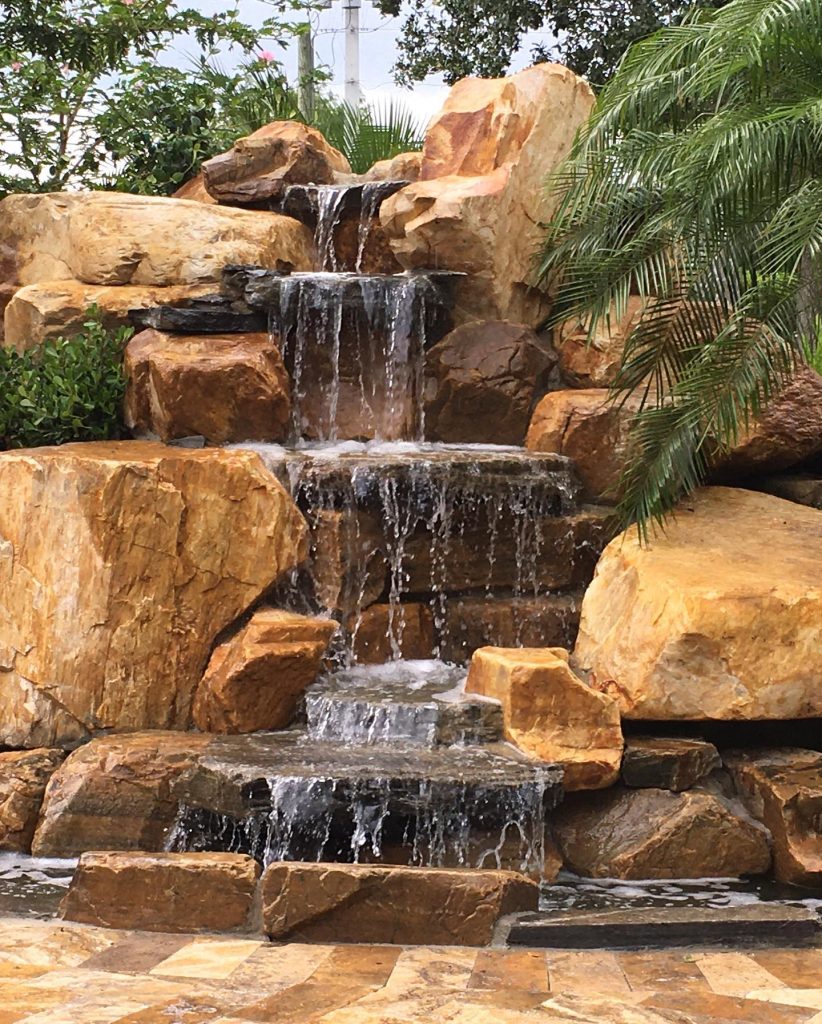
Incorporating water features into a rock garden brings a sense of tranquility and life to your outdoor space. Water can create soothing sounds and attract local wildlife, like birds and butterflies, enhancing the beauty of your garden.
One popular option is a small rock fountain, where water trickles over stones, creating a gentle and calming sound. Another option is to create a small pond surrounded by rocks, which can be stocked with aquatic plants like water lilies or floating moss. Adding a few larger rocks around the perimeter of the water feature creates a more natural, rustic look.
To maintain the natural aesthetic of the garden, choose rocks that match or complement the ones used in the rest of the garden. Natural stones, like river rocks or fieldstone, work best. Water features are relatively low-maintenance, but regular cleaning and care will ensure your garden remains serene and inviting.
5. Rock Wall Garden
Source:
If you have a sloped or uneven yard, a rock wall garden is a fantastic way to add visual interest and functionality. Rock walls can be used to create terraces or levels, allowing you to plant a wide range of plants and flowers.
Start by building a dry stone wall or stacking larger boulders. This allows you to create vertical planting spaces where you can add climbing plants, herbs, or cascading flowers. You can also add groundcover plants like creeping thyme or low-growing sedum at the base of the wall for added greenery.
A rock wall garden not only helps with erosion control on slopes, but it also provides a unique aesthetic by integrating natural stone elements into the landscape. Over time, plants will cascade down the sides of the wall, softening the hard lines of the stone and blending the structure seamlessly into the garden.
6. Alpine Rock Garden
Source:
An alpine rock garden is a perfect way to showcase hardy, high-altitude plants that thrive in cool, rocky environments. This garden style mimics the rocky terrain found in mountain regions, creating a unique and low-maintenance space.
To build an alpine rock garden, select plants that are well-suited to this environment, such as alpine asters, gentians, or saxifrages. These plants typically grow in harsh conditions, so they’ll thrive in your rocky garden. You can use larger stones, like boulders or granite slabs, to create the appearance of a rocky slope.
The key to success in an alpine rock garden is to focus on plants that can survive the combination of dryness and cold that often accompanies high-altitude environments. By creating different tiers or levels of rocks, you can mimic the diverse terrain found in mountainous regions, making for a visually dynamic and stunning garden.
7. Desert-Inspired Garden
Source:
If you live in a hot, dry region, a desert-inspired rock garden is an ideal way to add beauty without sacrificing water resources. This type of garden combines the ruggedness of rocks with hardy, drought-tolerant plants to create a striking desert landscape.
Start by choosing plants that thrive in dry climates, such as agave, yucca, and aloe vera. Incorporating hardy cacti, like saguaro or barrel cacti, will add texture and visual interest to the garden. Add gravel or crushed stone as a base to promote drainage, and scatter larger rocks throughout the space to provide structure and contrast.
The beauty of a desert-inspired garden lies in its simplicity and adaptability. Once established, these gardens require minimal maintenance and will thrive in hot and dry conditions, making them perfect for those living in arid or semi-arid climates.
8. Rustic Boulder Garden
Source:
For those who appreciate a more dramatic, natural design, a rustic boulder garden is the way to go. Large boulders placed strategically throughout the garden create a bold focal point and set the tone for a rugged, outdoor-inspired aesthetic.
Begin by selecting a few large boulders that can serve as the central pieces of your design. Place them in a way that feels natural—avoid perfect symmetry or rigid patterns. Surround these boulders with smaller rocks, pebbles, and plants that complement the natural look. You can add wildflowers, native grasses, or even small shrubs to help soften the hard lines of the boulders.
A rustic boulder garden works well in both large and small spaces and is perfect for those who want to make a statement. It requires little upkeep, and over time, as plants grow and fill in around the rocks, the garden will feel even more integrated with its natural surroundings.
9. Mediterranean-Inspired Rock Garden
Source:
A Mediterranean-inspired rock garden brings warm, rustic charm to your outdoor space. This type of garden is all about creating a relaxed atmosphere with hardy plants, sun-drenched stones, and an earthy color palette.
To begin, focus on selecting plants that are suited to hot, dry summers and mild winters, such as lavender, rosemary, thyme, and olive trees. Pair these fragrant herbs with warm-toned rocks like terracotta, sandstone, or even weathered stone to evoke the rustic feel of the Mediterranean coast.
Consider using larger stones to create retaining walls or raised garden beds that enhance the sloping design of a Mediterranean garden. Interspersing your plants with hardy flowers such as bougainvillea or geraniums will add vibrant splashes of color, while creeping thyme and groundcover herbs can create a soft, flowing effect between the stones.
10. Moss-Covered Rock Garden
Source:
For a garden that feels lush and green, consider a moss-covered rock garden. Moss naturally thrives in moist, shady areas, and when it grows on rocks, it creates a beautiful, velvety texture that adds softness to the hard edges of stone.
To start, choose rocks with a rough texture or porous surface, as moss tends to grow best on these types of stones. You can scatter small rocks around your garden or place them in a way that mimics natural outcroppings. After that, encourage moss to grow by keeping the area moist and shaded, or by planting moss species directly onto the rocks.
Moss-covered gardens require minimal maintenance, and over time, the moss will grow thicker, transforming your rock garden into a rich, green landscape. The subdued tones of the moss, combined with the natural textures of the rocks, create a peaceful and inviting outdoor space.
11. Modern Rock and Plant Design
Source:
If you prefer a sleek, contemporary look, a modern rock and plant garden design is the way to go. This design focuses on clean lines, minimalism, and a more structured layout, combining modern plants with geometric rock placements.
Start by choosing plants with interesting foliage, such as ornamental grasses or low-maintenance succulents like agave or yucca. These plants have sharp, clean lines that pair well with the hard angles of rocks. Consider using large, smooth stones like concrete or polished granite for a polished, modern feel.
The key to a modern rock and plant garden is simplicity. Use rocks in geometric patterns, such as straight lines or squares, and limit the plant selection to a few key species. By using contrast—sleek rocks and striking plants—you can create a bold and sophisticated outdoor space that looks both modern and timeless.
12. Vertical Rock Garden
Source:
A vertical rock garden is perfect for those with limited space or who want to create a unique, multi-dimensional look. By building up rather than out, you can maximize the available area and create a striking garden that takes advantage of height.
To build a vertical rock garden, start by installing a vertical structure such as a trellis, rock wall, or vertical planter. Arrange stones along the structure, leaving space for plants to grow. You can use smaller rocks at the base and larger ones near the top for visual balance.
Once the structure is in place, plant trailing or climbing plants like ivy, climbing roses, or cascading succulents. This type of design adds not only visual appeal but also a sense of depth to your garden. Vertical rock gardens are an excellent option for balconies, patios, or any area where space is at a premium.
13. Tropical Rock Garden
Source:
For a truly exotic and lush look, consider a tropical rock garden. This style is perfect for homeowners who live in warmer climates, as it combines lush, vibrant plants with the rugged beauty of rocks.
Start with large boulders and incorporate tropical plants like palm trees, bird of paradise, ginger lilies, or heliconias. These plants thrive in warm, humid environments and can add a burst of color to your rock garden. Use rocks to create a natural structure or layered effect that mimics the appearance of a tropical landscape.
To keep your tropical rock garden looking lush, ensure the plants have plenty of sunlight and moisture. This type of garden requires more maintenance than others, but the results are a vibrant, resort-like atmosphere that brings a touch of paradise to your backyard.
14. Woodland Rock Garden
Source:
A woodland rock garden is perfect for shaded or forested areas, offering a natural, woodland feel that integrates beautifully with your environment. By combining rocks with shade-loving plants, you can create a serene retreat that blends seamlessly with its surroundings.
To create a woodland rock garden, select rocks that mimic the appearance of natural outcroppings found in forests. Larger boulders can be used as focal points, while smaller stones can be scattered around to fill gaps. Plant woodland favorites like ferns, hostas, and wildflowers to fill in around the rocks.
This garden style thrives in areas with dappled sunlight and can be a peaceful retreat in which to enjoy nature. The interplay of moss, ferns, and rocks creates a calm, serene atmosphere that evokes the quiet beauty of a forest floor.
15. Rock Garden with Edging Stones
Source:
Adding edging stones to your rock garden can provide structure and define garden beds, pathways, or flower borders. This design option works especially well in formal gardens or areas where you want to keep your rock garden neatly contained.
To create a rock garden with edging stones, begin by selecting smaller stones that can easily be arranged to form a border. These stones can be stacked, set flush with the ground, or placed at an angle, depending on the effect you’re after. You can use natural stone, slate, or brick, depending on the style you prefer.
This type of design adds a sense of neatness and organization to your garden while still allowing the beauty of the rocks and plants to shine. The edging helps define the space and can be used to separate your rock garden from the rest of the landscape, making it a perfect choice for more structured outdoor designs.
16. Colorful Rock Garden
Source:
For those who want to add a pop of color to their outdoor space, a colorful rock garden is a fantastic choice. By using different types of colored stones, you can create a vibrant and lively garden that stands out in your landscape.
Start by selecting a variety of stones in shades of red, yellow, blue, or purple. You can mix different colors of gravel or pebbles, or choose larger rocks in complementary hues. Pair your colorful stones with bright flowers like petunias, geraniums, or marigolds for a visually stimulating contrast.
A colorful rock garden adds personality and vibrancy to your yard. Be mindful of balancing the intensity of the stone colors with the colors of your plants, and aim for a harmonious look that doesn’t overwhelm the senses.
Conclusion
Source:
Rock gardens offer a unique way to enhance the beauty and functionality of your outdoor space. Whether you’re looking to create a tranquil retreat, a striking focal point, or a low-maintenance landscape, there’s a rock garden idea for every taste and climate.
From Zen gardens that promote peace and mindfulness to vibrant desert-inspired landscapes, the possibilities are endless. When choosing the right rock garden idea for your space, consider factors like your climate, the size of your yard, and how much time you’re willing to invest in maintenance. With the right combination of rocks and plants, your rock garden can become a stunning and serene addition to your home that will be enjoyed for years to come.
Take inspiration from these 15+ ideas and begin creating the perfect outdoor space that reflects your personal style and embraces the natural beauty of rocks and plants. Happy gardening!

